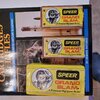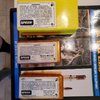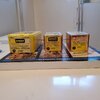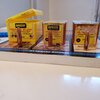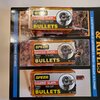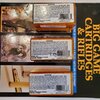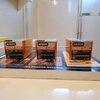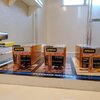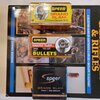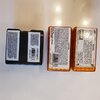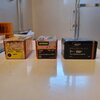Mr. Zorg said:I wasn't pleased with my one foray with ballistic tips, the Winchester CT version, 115 grain in factory. 25-06 Remington ammo. Great at the range but . . .
SPS tech told me the CT silvertip is a BT with a silver plastic tip when I ordered some .338 cal. 200 gr. to try. The ST did the job on a couple of scimitars but passed thru so unable to recover the bullets.
Don't know where I got the idea that the early NBT's had a thinner cup than current ....is this correct? Anyway, I've had very good results with the current "hunting" NBT's in .223, 6mm, .308 & .338 on small to medium size game (hogs to scimitar horn oryx in appropriate calibers). ETA: Appropriate calibers=223 for predators, hogs/deer w/careful placement; 6mm up to deer sized critters & 338 where needed.....have to confess to use of the .338 on many coyotes when its what I had in hand.
Nosler used to make a 100 gr. solid base, lead tipped spitzer which is no longer available in 6mm. I was fortunate enough to get a bunch before discontinued. It was an excellent bullet in 243 WSSM for hogs and deer.
Switched to the NP's in my first magnum many years ago. Only complaint is they are not capable of the benchrest precision that I prefer, but plenty accurate for hunting. Now use NP's in all calibers for game, after experimenting with NBT's & Accubonds, which are super accurate give adequate performance on game, within reason. But, IME, the Accubond is just one notch under the NP in performance on game .
IMO, premium bullets are well worth the difference in cost, considering the limited number actually shot at game. I generally do basic load development w/cheaper bullets, then fine tune and zero with the premiums.
Per bullet cost for my most common hunting calibers nowadays, .308 and .338:
.308...165 gr.
NP List $.88 NP Pro shop $.45 Sierra GK List $.33
.338....210 gr.
NP List $1.17 NP Pro shop $.50 Sierra GK List $.62
AB List $ .94 AB Pro shop $.48
.338....225 gr.
NP List $1.21 NP Pro shop $.51 Sierra GK List $.70
AB List $1.00 AB Pro shop $.50
Never found any difference in Nosler blems in performance and very rarely actually find any blemishes. Prices compare very favorably with the "cheaper" C&C.
Regards,
hps
Last edited:


